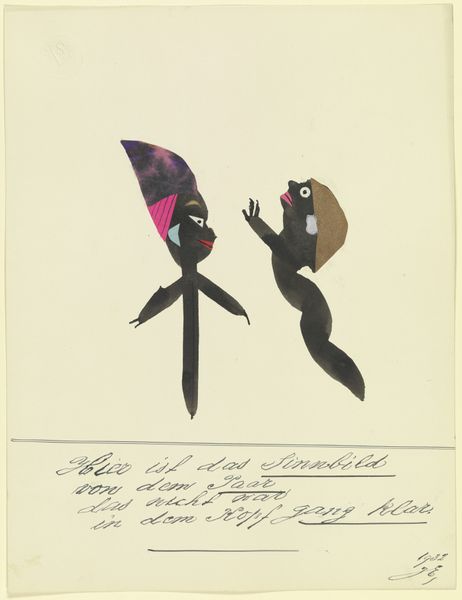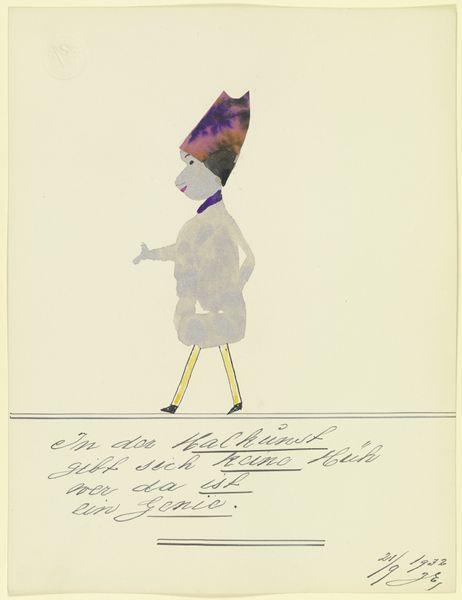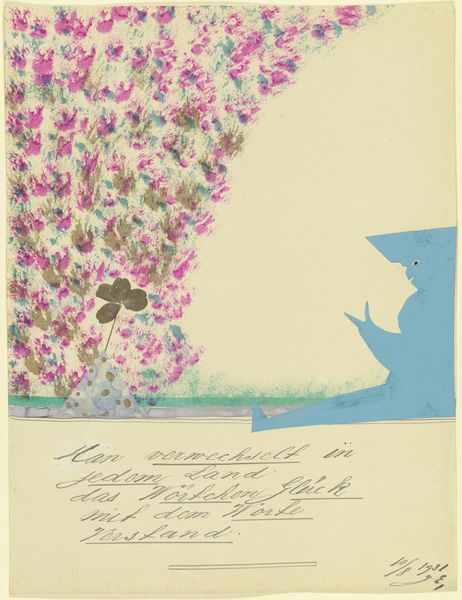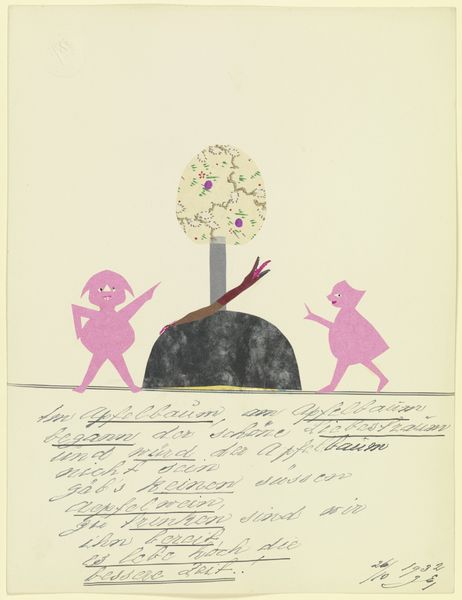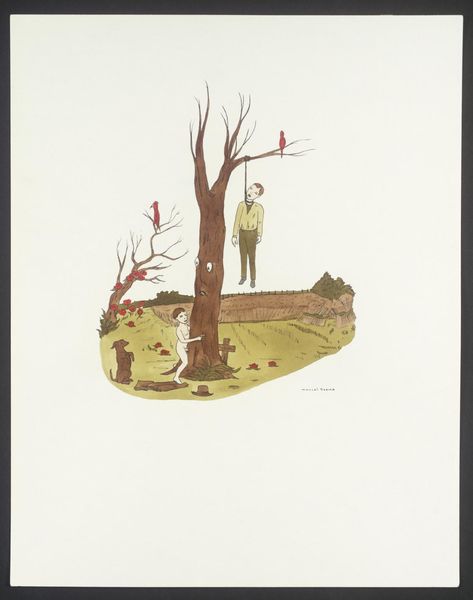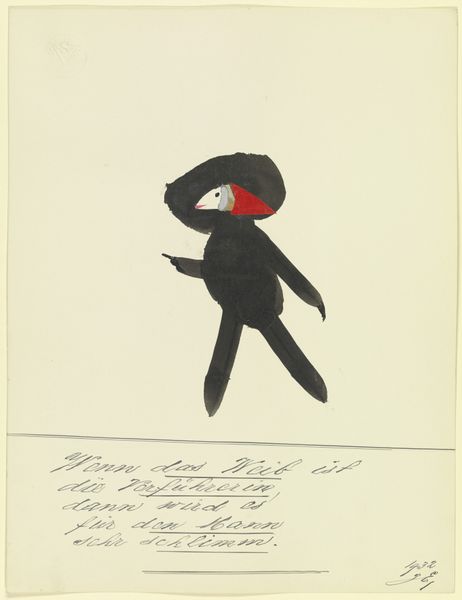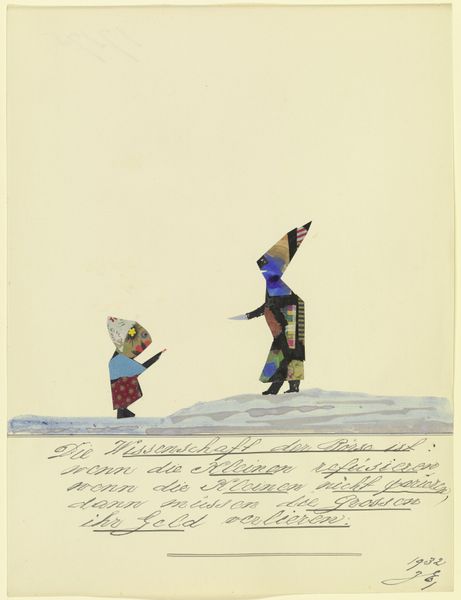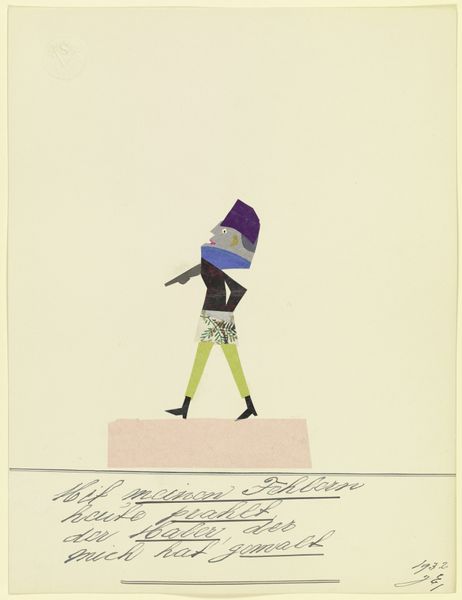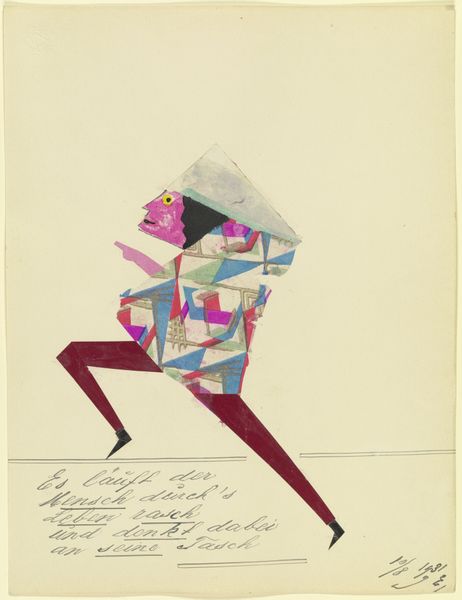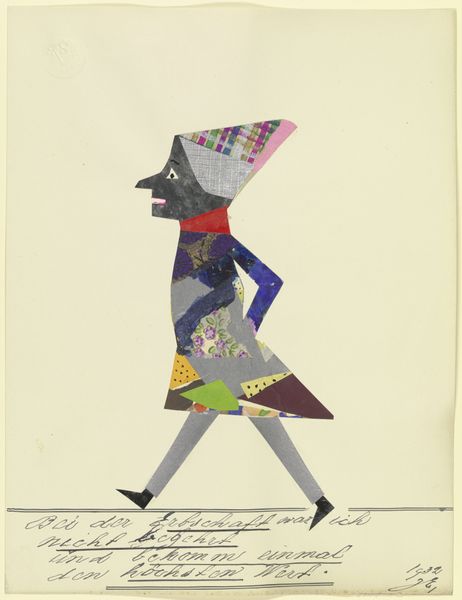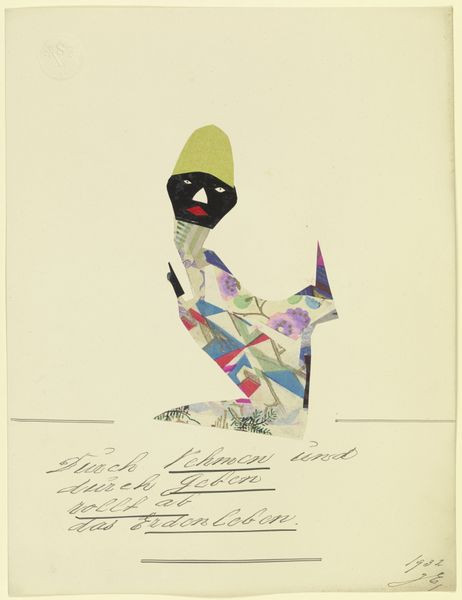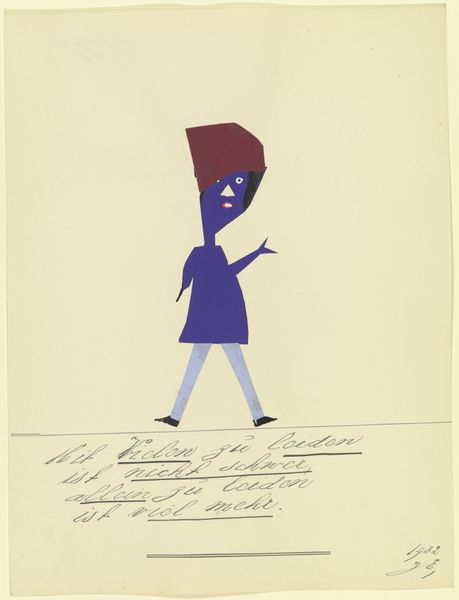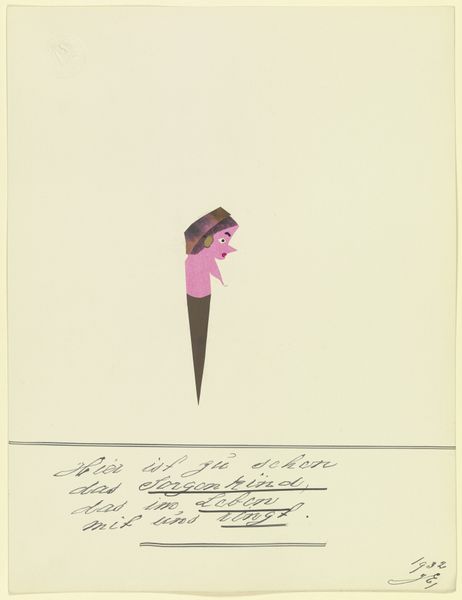
Copyright: Public Domain
Curator: This is John Elsas’ “16876 ('Wo die Wundermärchen sind …')”, created in 1932. It’s an arresting collage made with gouache, ink, and paper. Editor: It’s strikingly bold, almost unsettling. The figure's stark silhouette against those towering forms creates a disquieting sense of scale. The materials and textures seem deceptively simple. Curator: Let’s consider the composition. The flattened perspective, the row of identical figures in the background—they evoke a feeling of estrangement, a deliberate departure from naturalistic representation. The flatness pushes the narrative elements forward, almost like symbols within a larger code. Editor: I’m drawn to the paper itself. It feels humble, a daily material, elevated through the labor and layering of ink, gouache, and collage. How does the choice of these particular, inexpensive materials speak to the social context of the time? Perhaps an era where resources were scarce? Curator: Indeed, the materials may allude to the socio-economic conditions. But look closer at the formal relationships. Notice the repetition, the symmetry. How the use of a limited color palette—pink, grey, black, and the neutral color of the ground—functions structurally within the whole, creating visual harmony but also a sense of visual hierarchy between figure and ground. Editor: It does, and yet those colors feel far from harmonious! They jar the eye, pushing against each other in ways that I think add to the overall sense of tension. Were such specific colors readily accessible, indicative of an era? Could there be any cultural significance of color here? Curator: One could consider those avenues of interpretation, but what the consistent palette primarily offers here is a unifying visual structure, even given the limited hues employed, as a way to see through the artist’s choice making process in a rational and objective assessment. Editor: Perhaps it offers structure, but that is a structure borne from humble and perhaps limiting materials. Its stark expression is also inextricably linked to material conditions, and perhaps the emotional experience of using simple methods to realize great complexity. Curator: An intriguing interpretation; one rooted in the experiential aspects of the labor. I'll keep your perspective in mind as I continue to assess the art historical importance of John Elsas' unique visual style here. Editor: And I’ll ponder how the artmaking is linked to the lived experience!
Comments
No comments
Be the first to comment and join the conversation on the ultimate creative platform.
